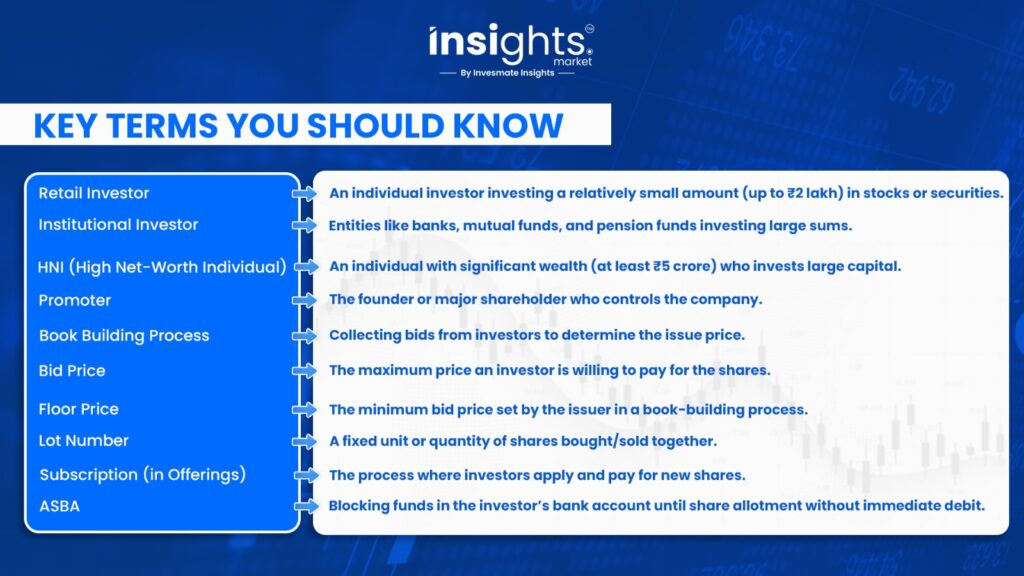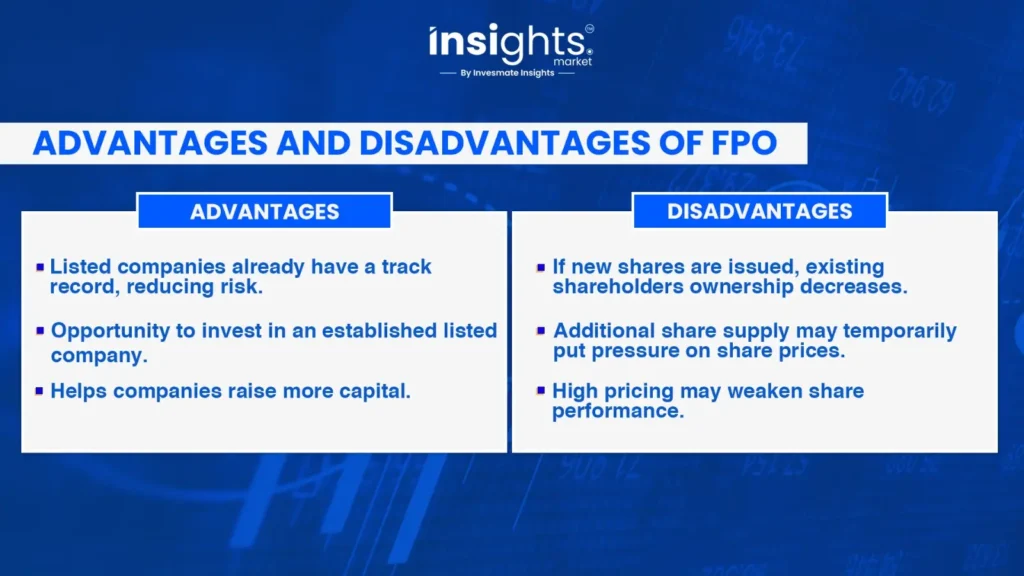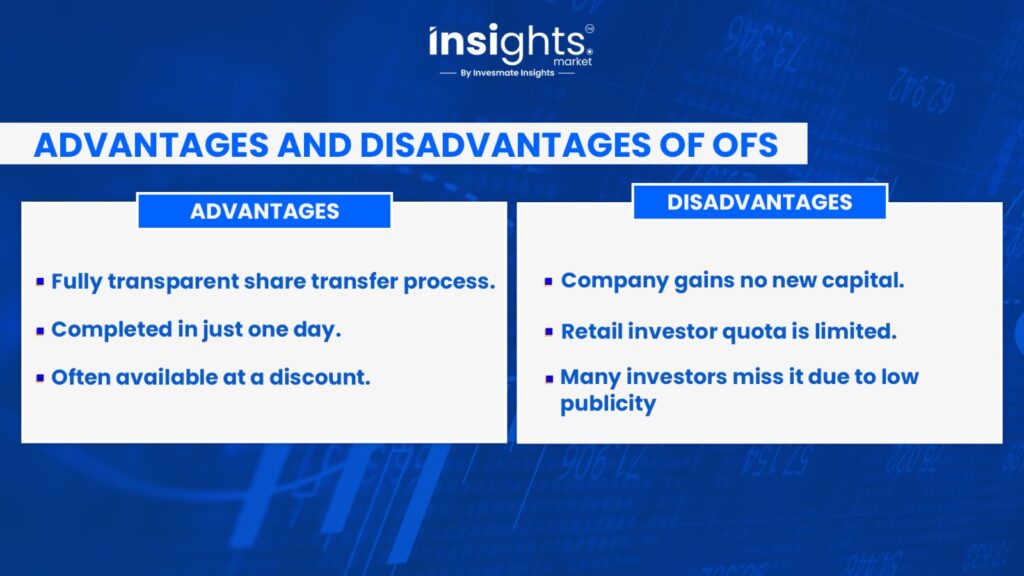![]()
Have you ever wondered why suddenly a company becomes the talk of the town after announcing a new share issue? Or why investors often plan their investments even before those shares hit the market? IPO, FPO, and OFS—these terms are often heard, but do you truly understand their meaning and differences? If you did, would you be able to identify the most suitable investment opportunity for yourself? To answer these questions, you must first understand why and how companies raise funds through the stock market.

A company may sell its shares in the stock market to raise the necessary funds for business expansion, repaying existing debt, or investing in new projects. In doing so, they sell a portion of their ownership to increase capital. There are different methods for such share sales—such as IPO, FPO, and OFS—each with its own structure, purpose, and process.
In this blog, you’ll learn how IPO, FPO, and OFS work, their key features, the step-by-step investment process, their advantages and risks, and a comparative analysis of their fundamental differences. Most importantly, you’ll understand which method might be more suitable for new investors under different circumstances—making this a complete guide for your investment journey.
Also Read: Do You Want to Become a Successful Investor? Learn These 7 Habits
What is an Initial Public Offering (IPO)?
When a private company sells its shares to the public for the first time and gets listed on a stock exchange, the process is called an Initial Public Offering (IPO).
The capital raised from an IPO is generally used for business expansion, debt repayment, or infrastructure development.
Key Features of an IPO:
- Company Status: A private company enters the stock market and becomes a public company.
- Who Can Invest: Primarily retail investors, institutional investors, and high-net-worth individuals (HNIs).
- Purpose: To raise capital from the market and get listed on a stock exchange, enabling future expansion or debt repayment.
- Type of Shares: New shares are issued through an IPO.
- Price Determination: The share price is set either through a Fixed Price Issue or the Book Building process.
Example:
Zomato (now Eternal) launched its IPO in 2021 and became a public company. The IPO was oversubscribed multiple times, attracting huge investor interest.
How to Invest in an IPO:
- Open a Demat and Trading Account.
- Use your bank or broker’s app to apply via the ASBA (Application Supported by Blocked Amount) option.
- In the IPO section, select the lot size and bid price (if it’s book building) and submit your application.
- Funds are blocked, not debited, until allotment is confirmed.
- IPOs remain open for 3–5 working days.
- Shares are allotted based on lottery or proportionate subscription.
If no shares are allotted, your blocked amount is released back to your account. Also Read: How to Build a Stock Market Portfolio? Learn These 9 Essential Steps

What is a Follow-on Public Offering (FPO)?
If a company requires additional funds after its IPO, it may opt for an FPO.
Types of FPO
- Dilutive FPO – New shares are issued, increasing the total number of shares and reducing the ownership percentage of existing shareholders.
- Non-Dilutive FPO – No new shares are issued; instead, existing shareholders (often promoters) sell their shares.
Key Features of an FPO
- Purpose: To raise additional capital for business expansion, debt repayment, or other financial requirements.
- Shares: Could be newly issued shares or shares sold by promoters.
- Impact on Ownership: If it’s a dilutive FPO, existing shareholders’ ownership percentage decreases.
Example:
Vodafone Idea launched an FPO in 2024 at a price range of ₹10–₹11, which was later listed at a slightly higher price.
How to Invest in an FPO
- You must have a Demat and Trading Account.
- Check the “Ongoing Public Issues” section on your broker’s platform or app.
- Review the price, lot size, and time frame before applying.
- The ASBA process is also used for FPOs.
- Offerings usually remain open for 3–5 days.
- Shares are allotted based on subscription ratio, and allotted shares are credited to your Demat account.
Advantages and Disadvantages of FPO

What is an Offer for Sale (OFS)?
In an Offer for Sale (OFS), promoters or large shareholders sell their shares in the open market. This only transfers ownership—the company itself does not receive any new capital.
Key Features of an OFS
- Purpose: Allows promoters or large shareholders to partially or fully exit their holdings.
- Shares: Only existing shares are sold—no new shares are issued.
- Process: Shares are sold through an auction on the stock exchange, where interested investors bid at or above the floor price.
Example:
In 2023, the Government of India conducted an OFS in Coal India at a floor price of ₹225, with allotments made at ₹226.
How to Invest in an OFS
- You must have a Demat and Trading Account.
- OFS is open for just 1 working day, so quick action is required.
- Details can be found in the “Buy/Sell” or “Ongoing Offers” section of your broker’s app.
- When bidding, mention the floor price and quantity of shares accurately.
- ASBA is not used here—your trading account must have the funds available.
- Retail investors are often offered a discount (up to 5%).
- Allotted shares are credited to your Demat account within a few days.
Advantages and Disadvantages of OFS

Key Differences Between IPO, FPO, and OFS

Conclusion
IPO, FPO, and OFS are three key mechanisms for raising capital in the stock market or transferring promoter shares. Each has unique features, processes, and investment opportunities—providing different advantages for new and experienced investors.
An IPO allows a new company to enter the market, an FPO enables a listed company to raise additional capital, and an OFS gives promoters an easy way to sell their holdings.
Before investing, it’s important to assess the risks, regulations, and pros and cons of each method. With the right knowledge and preparation, you can approach the market more confidently and successfully.
FAQs
No. In the ASBA process, your money is only blocked, not debited. If you don’t get allotment, the blocked amount is released.
The FPO prospectus or offer document clearly states whether it is dilutive (new shares) or non-dilutive (existing shares).
Because OFS is open for just one day, often with minimal promotion, and it mostly targets institutional or HNI investors.
No. Allotted shares usually take 2–3 working days to reflect in your Demat account.
Yes, as long as you have sufficient funds and meet the eligibility criteria.
Up to ₹2 lakh. Any amount above this falls into the HNI category.




